What to Expect at the 2024 Total Solar Eclipse in Cleveland
by Annie Nickoloff | Apr. 7, 2023 | 1:44 PM
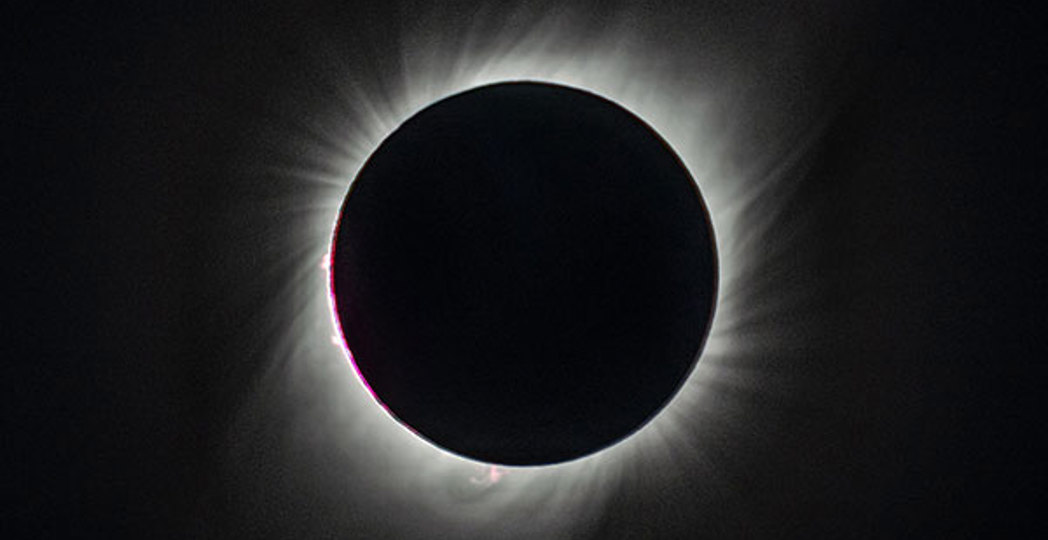
Courtesy Erik Drost via Flickr, Courtesy NASA Goddard Space Flight Center, Flickr, Courtesy NASA/Bill Ingalls, Courtesy Jan M. Wittry, NASA
On April 8, 2024, darkness will descend on Northeast Ohio when a total solar eclipse arrives. While the eclipse’s path will span much of North America, including a swath of Ohio from Toledo to Youngstown, Cleveland is sure to be a hotspot for viewing the astronomical event.
RELATED: Total Solar Eclipse Cleveland Party Guide: Where to Be in Northeast Ohio on April 8
Looking to plan ahead for the big day? Here’s what you should know.
Historic Happening
The last time any part of Ohio saw a total solar eclipse was in 1806, says Chris Hartenstine, NASA Glenn Research Center’s public engagement lead.
It’s truly a once-in-a-lifetime event. The next time a total solar eclipse will happen in Northeast Ohio is in 2099, along the Lake Erie shoreline. But for Cleveland-proper, it’ll be another few hundred years, expected in 2444.
Solar eclipses are relatively common, but it’s more rare for them to be visible from cities like Cleveland, Hartenstine says.
“Total solar eclipses happen somewhere around the planet about every 18 months. The question is, where is it? Where's it gonna be? Is it somewhere over land?” Hartenstine says. “A lot of times it's over the Pacific Ocean, a lot of times it could be in the Arctic or Antarctic Circles where people just aren't going to be attending as much. To have one in the path of major metropolitan areas is very unique and Northeast Ohio will have even fewer.”
RELATED: Once-In-a-Lifetime: Cleveland's Total Solar Eclipse Puts a Spotlight on Northeast Ohio
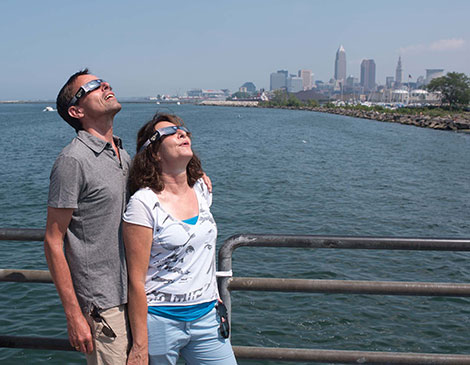
(Photo courtesy Jan M. Wittry, NASA)
Eclipse Experience
The eclipse will start around 2 p.m. on April 8, 2024, initially as a partial solar eclipse that people can safely view using solar glasses, Hartenstine says. At that point, the moon will partially block the sun, creating a glowing crescent in the sky.
Cleveland experienced a partial solar eclipse in 2017. During the event, crescent-shaped shadows landed on the ground, and shadow bands also streaked across the ground and surfaces, Hartenstine says.
On April 8, around 3:13 p.m., the scene will suddenly change, when the eclipse reaches totality. The sun will disappear behind the moon for a relatively lengthy three minutes and 50 seconds, and in those few minutes, the temperature will noticeably drop. During that time, people can safely remove their solar glasses to view the eclipse, Hartenstine says.
They’ll see, in the suddenly darkened sky, bands of radiation flicking away from the sun.
“It’s happening all the time during daytime, but because the big bright disc of the sun is right there, you can’t see any of it,” Hartenstine says. “Once that disc is covered, you see this radiation coming off the sun in almost your entire field of view.”
RELATED: How to Gear Up for the 2024 Total Solar Eclipse in Cleveland
After totality, the earth and moon’s movements will lead back into a partial eclipse, until sunlight levels return to normal.
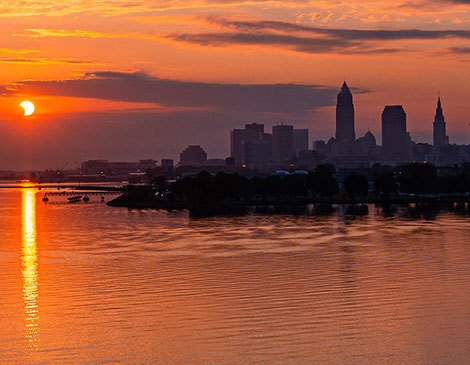
(Photo courtesy Erik Drost, Flickr)
Point of View
You’ll want to see this natural wonder. But, where?
Pro tip: Find a viewing spot without trees or other obstructions overhead, to fully marvel at the sky. Otherwise, it’s up to personal preference, Hartenstine says.
“I would equate it to going and watching the Cavs and the championship. Some people want to watch from the comfort of their home; some people want to be at a local bar with a handful of people, and some people want to be at the arena watch party. It depends on the type of person,” Hartenstine says. “For the folks who want to be out and in the scene of it, I would definitely recommend a high-level viewing opportunity.”
RELATED: The Total Solar Eclipse will Bring a Magical Shared Experience to Cleveland: Essay
Greater Cleveland Celebrations
Wondering where you should spend the eclipse day? Celebrations are already being planned. NASA will be involved in the eclipse event at the Great Lakes Science Center, likely stationed on the front lawn of the building. It’ll be a part of the GLSC’s greater festival, utilizing the entire harbor area, Hartenstine says.
NASA will have a large presence in Cleveland that day, broadcasting the eclipse experience in the city.
“Cleveland, Northeast Ohio, is the only Midwestern metropolitan area that has a NASA center, and the only area in the path of totality that has a NASA center,” says Jan Wittry, NASA Glenn Research Center’s news chief. “We’re just really excited to be here and to be a part of it.”
Other organizations and towns have already started to announce their own eclipse watch parties, including Lorain’s Solarfest. Expect more to come.
Tourism Uptick
Expect crowds — and for different reasons. In the days immediately preceding the total eclipse, Cleveland will also host the NCAA’s Women’s Final Four Championship, which is expected to bring in 40,000 people, says Emily Lauer, the Vice President of PR & Communications for Destination Cleveland.
Lauer says Cleveland stands out as a hotspot for eclipse viewing for three reasons One, the city has a longer duration of totality. Two, the area hosts miles of lakeshore, plus green spaces at the Metroparks and Cuyahoga Valley National Park that provide unobstructed sky views. Three, NASA Glenn Research Center is based here, providing programming and expertise around the event.
“We need to be prepared for an influx of visitors on, really, a day that has not in the past been a big visitor day for us,” Lauer says.
“Based on the history with 2017, and what we saw from the major metro areas is Jefferson City, Nashville, every other area, expected or saw about a doubling of their population for the eclipse day,” Hartenstine says. “It will be a community celebration.”
RELATED: Cleveland's 2024 Total Solar Eclipse, By The Numbers
Destination Cleveland has been preparing for the event for months already, Lauer says. The organization has been planning logistics for events, crowd control and marketing campaigns.
“Mother Nature has gifted us this event. We didn’t have to bid on it like we do with all the other events that we bring to the city,” Lauer says. “With big events for us, it’s not just the number of people that it brings in and the money they spend here, but it’s putting Cleveland on the national and world stage.”
Before All of That...
Keep the Saturday, Oct. 14 annular solar eclipse on your calendar, too. The partial eclipse will take place at around noon, for about two hours, with its biggest effect taking place just after 1 p.m. It won't be nearly as jaw-dropping as the April event, though.
Get Ready
Make your eclipse plans early, Lauer says, especially if it involves travel to Cleveland. Follow NASA's announcements regarding the eclipse, and learn more about the path of totality, at nasa.gov.
Want to geek out and get the party started early? GLSC is hosting an eclipse countdown event on Friday and Saturday, April 7-8. Find more information at greatscience.com.
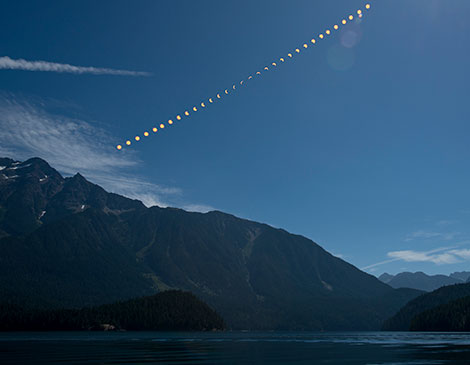
(Photo courtesy NASA/Bill Ingalls)
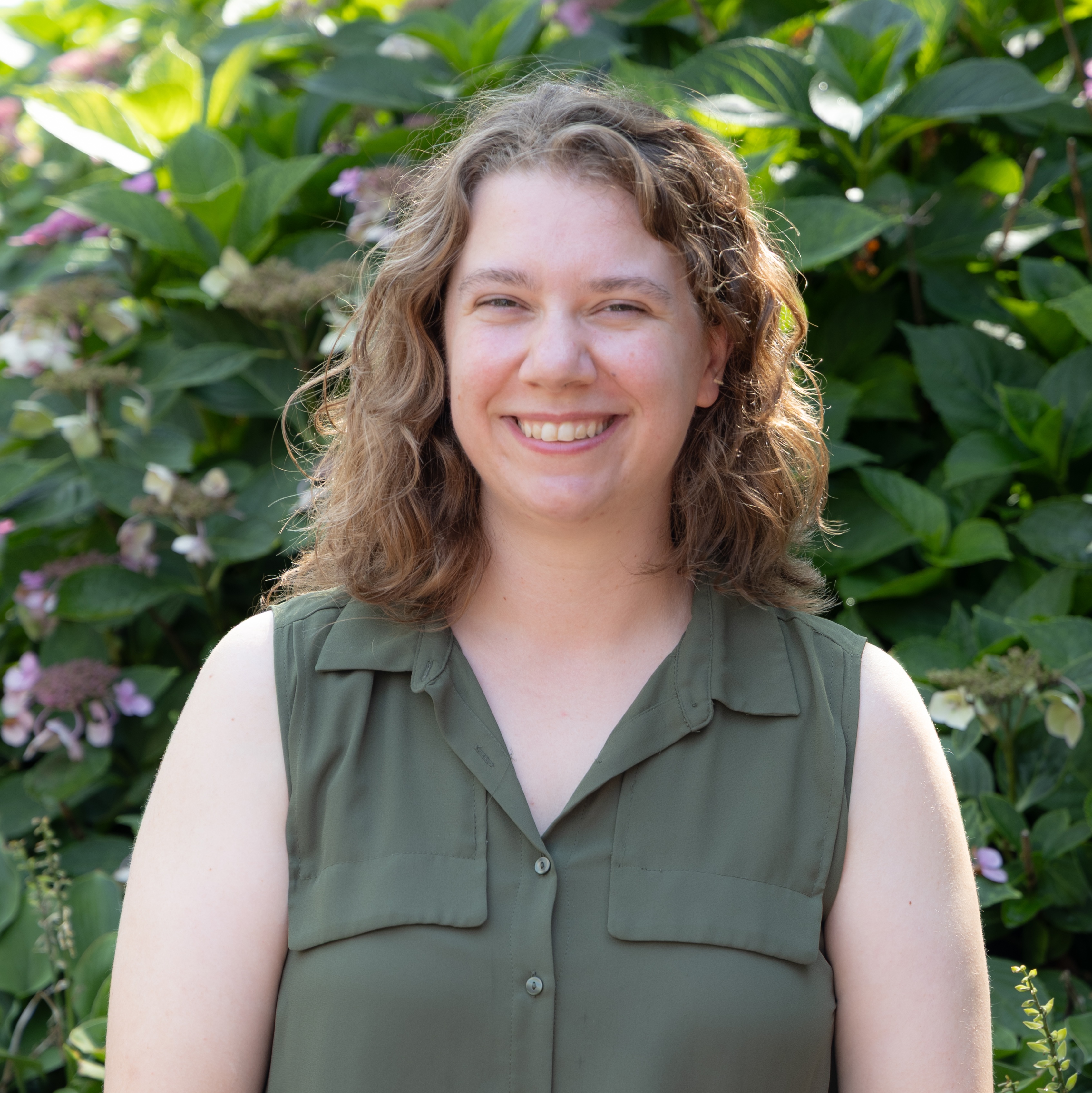
Annie Nickoloff
Annie Nickoloff is the senior editor of Cleveland Magazine. She has written for a variety of publications, including The Plain Dealer, Alternative Press Magazine, Belt Magazine, USA Today and Paste Magazine. She hosts a weekly indie radio show called Sunny Day on WRUW FM 91.1 Cleveland and enjoys frequenting Cleveland's music venues, hiking trails and pinball arcades.
Trending
-
1
-
2
-
3
-
4
-
5










